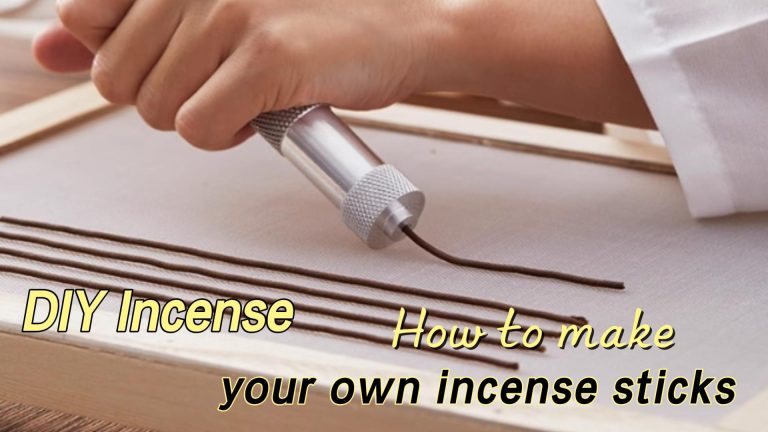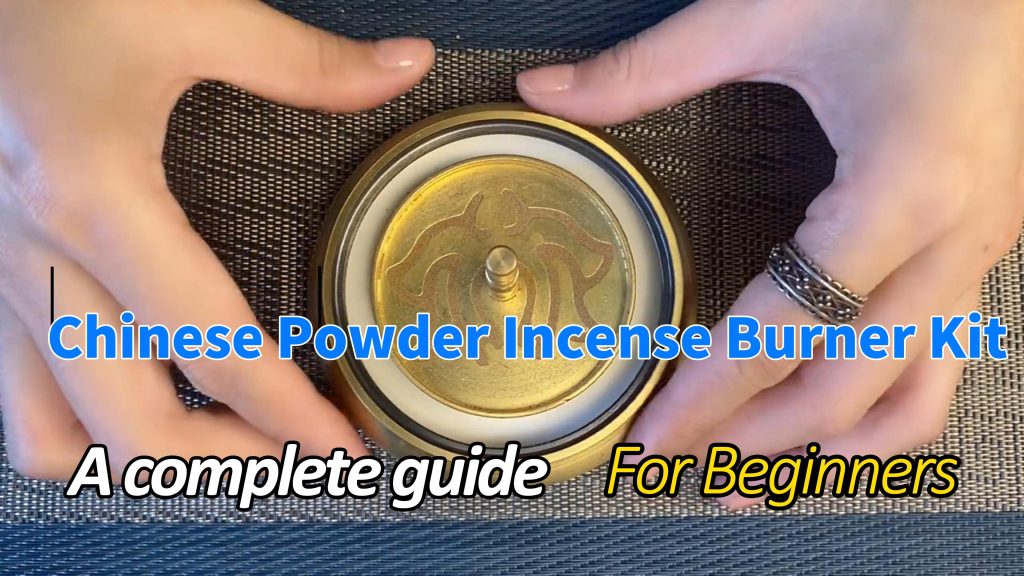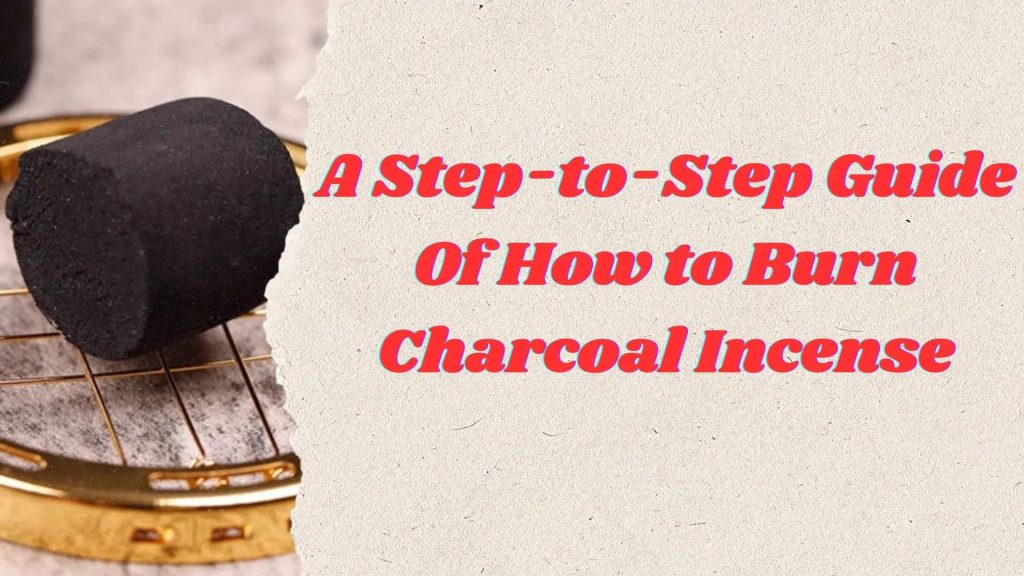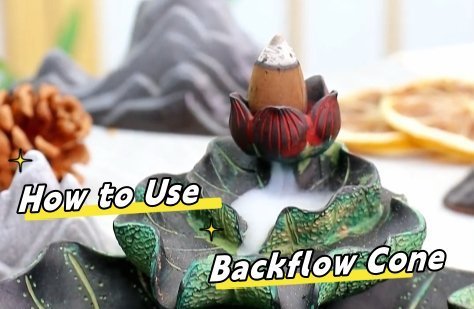Making your own incense sticks is a fun and creative way to fill your home with beautiful scents. Whether you prefer the calming aroma of lavender, the sweet fragrance of rose, or the earthy smell of herbs, making incense at home lets you choose exactly what you want. Plus, it’s a great way to explore natural, DIY methods of creating a peaceful atmosphere.
In this guide, we’ll show you how to make incense sticks at home using different ingredients like essential oils, fragrance oils, herbs, and flowers. You’ll learn easy steps to blend the perfect mixture, shape your incense sticks, and let them dry. Whether you’re new to making incense or looking to try something different, this article will give you everything you need to get started.
Key Takeaways
- Understanding how to making incense sticks from start to finish.
- Exploring various ingredients and their impact on the fragrance and burn quality of incense sticks.
- Discovering how to customize your incense with essential oils, herbs, and flowers for unique scents.
- Identifying common troubleshooting tips for issues like uneven burn, breakage, and inconsistent scent.
- Highlighting the importance of ingredient ratios and kneading for the perfect dough consistency.
- Learning how to create incense sticks with a strong, lasting fragrance and even burn
Materials and Tools You Need to Make Incense Sticks
For beginners who wonder can you make your own incense sticks, the answer is definitely yes. But you just need a few materials and tools as listed in the following table:.
| Materials | Purpose |
|---|---|
| Incense Powder | Provides fragrance when burned |
| Binder | Holds incense powder together and shapes the sticks |
| Water | Activates the binder and helps form the dough |
| Incense Stick Maker | Shapes the dough into uniform incense sticks |
| Drying Rack | Dries incense sticks evenly and thoroughly |
| Trimming Tools | Ensures incense sticks have uniform length |
| Measuring Tools | Ensures accurate measurements of ingredients |
| Mixing Bowls | For mixing incense powder, binder, and water |
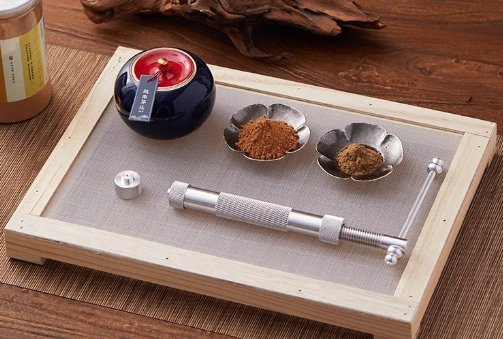
Step-By-Step Guide of How to Make Incense Sticks At Home
Making unscented incense sticks is an intricate, time-consuming craft that blends artistry and science. The process involves careful attention to the choice of ingredients, their proportions, and the technique used to shape and dry the sticks.
The above video gives a detailed introduction of how to make homemade unscented incense sticks. Below is a step-by-step breakdown of the process of how to make your own unscented incense sticks. You can also find more chinese incense here.
Step 1. Prepare the Ingredients
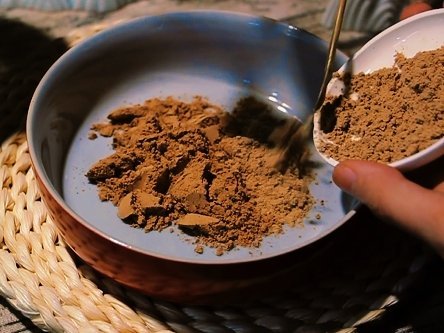
The quality of incense sticks depends greatly on the choice and preparation of the raw materials.
Incense Powder: This is the primary aromatic ingredient that will give the incense its fragrance. Various natural materials are used, depending on the desired scent. Common types include:
- Sandalwood powder: Known for its soothing, calming fragrance.
- Agarwood (Oudh) powder: Highly aromatic, often used for its rich, deep scent.
- Jasmine, rose, lavender, or herbs: These are often added for floral or herbal notes. The quality of the incense powder is crucial for a long-lasting and pleasant fragrance.
Binder: The binder holds the incense powder together and gives the incense stick its shape. The binder is typically made from natural substances, including:
- Wood powder: Commonly used to add consistency.
- Plant gums (e.g., Arabic gum): Used to bind the materials and ensure the incense sticks hold together.
- The binder is usually 15% of the total mixture, providing the structure needed for shaping and drying.
Water: Water is added to the incense mixture to activate the binder and help form a dough-like consistency, making it easier to mold. The amount of water used is typically in a 1:1 ratio with the incense powder and binder mixture
Step 2. Blend the Ingredients
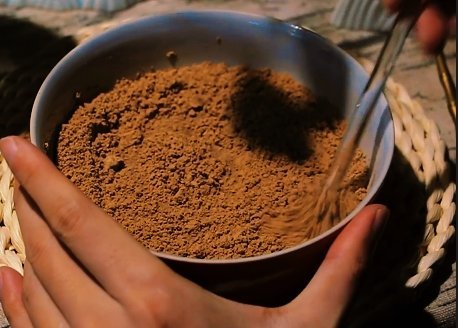
The next critical step is blending the incense powder with the binder. This ensures that the incense sticks have the right texture, fragrance, and burning quality.
Combine the Incense Powder and Binder:
- The incense powder typically makes up 85% of the total mixture, while the binder accounts for the remaining 15%.
- The binder serves an important role in holding the incense powder together and helping the mixture maintain its shape during molding. It also ensures that the incense burns evenly by providing structure and preventing crumbling.
- The incense powder contributes to the fragrance of the incense, determining how aromatic it is when burned. While the binder has less influence on the fragrance, it plays a critical role in the texture and overall burn quality of the incense.
Why the 85%-15% Ratio?:
- This ratio is essential to achieve a balance between fragrance and texture. The higher percentage of incense powder ensures the incense has a strong, pleasant fragrance, while the binder keeps the incense sticks firm enough to burn properly.
- Too much binder can make the incense stick too thick, leading to a slow and uneven burn. If the mixture contains too little binder, the incense can become fragile and may break or crumble easily.
Add Water to Form the Dough:
- Once the powder and binder are well-mixed, water is added in a 1:1 ratio to create a dough-like consistency. This ratio is crucial for activating the binder and ensuring that the dough is neither too dry nor too wet.
- The right moisture level allows for optimal shaping, helping the dough hold together well during molding without becoming sticky or overly soft.
Step 3: Knead Until Smooth
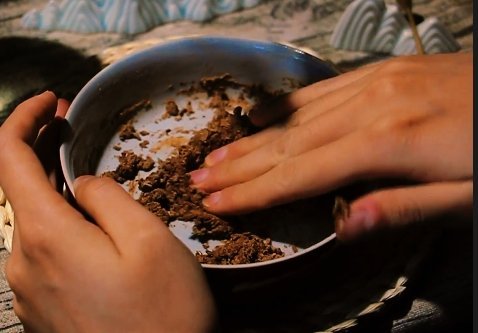
After adding water to the incense powder and binder mixture, the next key step is kneading the dough to achieve a smooth, uniform texture. Proper kneading ensures the dough is easy to mold into incense sticks or cones and that it will burn evenly. Here’s how to knead effectively:
Begin Kneading the Mixture:
- Start kneading the mixture by hand. Use your palms and fingers to press, fold, and stretch the dough. This helps evenly distribute the moisture and activate the binder, which is essential for holding the incense together.
Monitor the Consistency:
- The dough should be smooth, slightly flexible, and firm enough to hold its shape without falling apart.
- If the dough feels too sticky, add a small amount of incense powder or binder to absorb the excess moisture.
- If the dough is too dry or crumbly, gradually add small amounts of water. Be cautious with the water—add it in small increments to avoid over-wetting the dough.
Tips for Effective Kneading:
- Knead for about 3-5 minutes: This ensures the dough becomes well-mixed and the binder is fully activated. The goal is to achieve a smooth, cohesive dough with no lumps or uneven moisture distribution.
- Texture Check: After kneading, the dough should feel like soft modeling clay. It should not be so soft that it sticks to your hands, but it should have enough pliability to shape easily.
Step 4: Shape the Incense Sticks
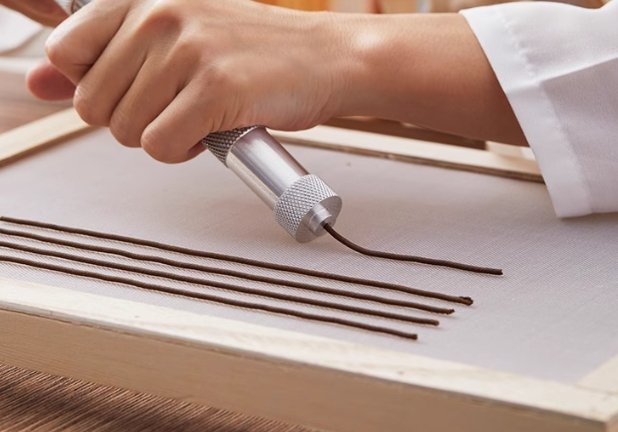
- Using the Incense Stick Maker: The dough is then transferred to a incense stick maker, a tool designed to press and shape the dough into uniform sticks. This tool could be manual or machine-operated, depending on the scale of production.
- Manual Shaping: If done by hand, the dough is rolled or shaped by hand into thin, uniform sticks. This process requires a skilled touch to ensure that the incense sticks are consistent in thickness and length.
- Machine Shaping: In larger-scale production, machines can press the dough through molds, shaping the incense into uniform sticks. This ensures consistency across all incense sticks.
- Ensuring Consistency: The key to shaping incense sticks is maintaining uniform thickness. If the sticks are too thin, they may burn too quickly and lose fragrance; if they are too thick, they may burn unevenly and release less aroma. The incense sticks should be around 2-3 mm in diameter, which is ideal for slow and even burning
Step 5: Trim and Refine
After shaping the incense sticks, the next step is to trim and refine them. This process ensures uniform length and smooth, even edges.
Trim the Incense Sticks:
- Use trimming tools to cut the sticks to the desired length. The standard length for Chinese incense sticks is typically 21 cm (8.25 inches), but you can adjust this based on your preference or market needs.
- Trim the sticks to ensure they are consistent in size, which helps them burn evenly.
Refine the Shape:
- Carefully inspect the incense sticks to ensure they have a uniform thickness and shape. If any stick is too thick, thin it out gently using a blade or similar tool.
- Make sure there are no jagged or uneven edges. A clean, smooth shape will promote even burning and a more aesthetically pleasing product
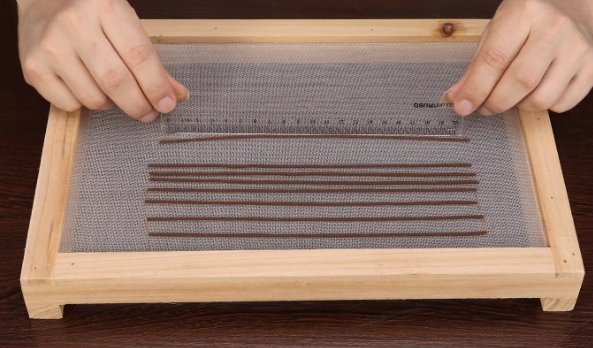
Special Notice About How Long Your Incense Sticks Should Be:
When shaping incense sticks, the length can vary based on your preference and cultural tradition:
- Chinese Incense: Full-length sticks are typically 21 cm (8.25 inches), and half-length sticks are about 10.5 cm (4.125 inches).
- Japanese Incense: These are usually shorter, ranging from 7 cm (2.75 inches) to 15 cm (6 inches).
For reference, a full-length 2mm Chinese incense stick weighs approximately 0.45g. 28g (1 oz) of incense mixture will yield about 40 full-length sticks, so adjust your ingredient quantities based on the number and length of sticks you plan to make.
Step 6: Dry the Incense
- Drying on the Rack: After shaping, the incense sticks must be dried to remove excess moisture. This is a crucial step because moisture affects the incense’s burn quality, aroma, and shelf life.
- The incense sticks are carefully arranged on a drying rack, which allows for proper air circulation around each stick. The drying rack should have a fine mesh to ensure that the incense sticks are evenly spaced, preventing them from sticking together as they dry.
- Drying Time: The drying process can take anywhere from 2-3 days, depending on the environmental conditions. The temperature, humidity, and airflow all affect drying time. Ideally, the incense sticks should be placed in a well-ventilated, dry area. Excessive humidity or damp conditions can cause mold growth or uneven drying, which would affect the quality of the incense.
- Monitoring the Drying Process: It’s important to regularly check the incense sticks to ensure they are drying evenly. If they’re drying too quickly, they may crack; if they’re too moist, they may not burn well. You should rotate the incense sticks occasionally for uniform drying.
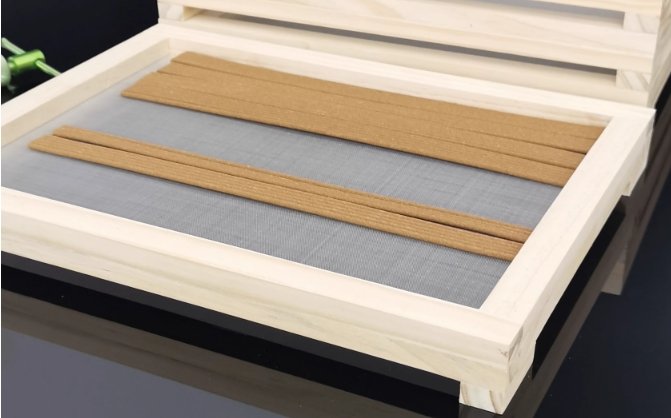
Step 7. Quality Check
- Inspecting the Sticks: Each incense stick is thoroughly inspected for quality. The key qualities to check are:
- Uniform Thickness: The incense sticks should all be of consistent thickness to ensure they burn at the same rate.
- Even Texture: There should be no lumps or cracks on the surface of the incense.
- Fragrance: The incense should have a strong and pleasant scent that matches the intended fragrance. The smell should not be too weak or overly harsh.
- Burn Test: A small burn test may be performed to ensure the incense burns evenly and consistently without producing excessive smoke or an uneven flame.
Scented: How to Make Your Incense Sticks Smell Good
The above tutorial is about how to unscented incense sticks at home. However, many people might wonder how to make incense sticks with fragrance oil and fragrance oil and how to make incense from flowers or herbs. The essence of these questions is how to make your incense sticks smell good or how to make scented incense sticks.
To answer these questions, you just need to customize the first step: “Prepare The Ingredients”. Here is how you can do it:
How to Make Incense Sticks from Flowers
For people wondering how to make natural incense sticks, making incense sticks with flowers is your best answer. Making incense sticks with flowers has a far more natural, organic process. Here’s how you can incorporate flowers into your incense:
Dry the Flowers:
- Choose flowers with strong, pleasant scents like lavender, rose, jasmine, or chamomile. Dry them thoroughly by air-drying or using a dehydrator.
- Tip: Ensure that your flowers are thoroughly dried before use. Moisture in the flowers can lead to mold or unwanted bacterial growth during the incense-making process.
Grind the Flowers into Powder:
- Once the flowers are completely dried, grind them into a fine powder using a mortar and pestle or a grinder.
- If you are using multiple types of flowers, grind them separately to maintain their distinct fragrances. You can mix the powders afterward to create a custom fragrance blend.
- Tip: If you notice that your ground flower powder is clumping together, it may still contain moisture. Make sure to let the powder dry completely before mixing it with the base mixture
Mix with the Base:
- Mix the flower powder with your incense powder base. The amount of flower powder can be 10-30% of the total mixture depending on how strong you want the fragrance to be.
- Add the binder (15%) to the mixture and blend well.
- Tip: If you’re experimenting with multiple types of flowers, mix the powders together before blending them with the base powder. This allows you to balance the floral scents and create a custom fragrance that suits your preferences
Add Water and Knead:
- Add water in the 1:1 ratio to create a dough. Knead until smooth and even. You can also add some flower juice from your from your fresh flower to enhance the aroma
Shape and Dry:
- Shape the dough into incense sticks and let them dry thoroughly.
Tip: Flower-incensed sticks tend to have a subtle, calming fragrance. Adjust the quantity of flower powder according to your desired intensity.
The above youtube video uses fresh rose flower to make a rose incense stick. You can pay attention to the following two details as you watch this video:
- In this video, we do not use water but instead use juice squeezed from fresh rose petals. which will make the rose incense better smelling.
- In this video, we follow the following formula: 60% rose power+25% agarwood powder+15% nanmu binder.
How to Make Incense Sticks with Herbs
Herbs can also be used to make unique and aromatic incense sticks. Common herbs for incense include sage, rosemary, mint, or thyme.
The above youtube video gives an introduction of how you can make incense sticks at home with orange peels and apple peels. If you want to know how to make herbal incense, here is a detailed introduction::
Prepare the Herbs:
Dry the Herbs: Before using the herbs, they need to be dried to remove moisture and prevent mold growth. You can dry herbs in a few different ways:
- Air-drying: Tie the stems together and hang them upside down in a dry, well-ventilated area. Leave them for about 1-2 weeks until they are completely dry.
- Dehydrator: For faster drying, you can use a dehydrator, which will remove moisture more quickly.
Grind the Dried Herbs: Once the herbs are completely dried, grind them into a fine powder using a mortar and pestle or an electric grinder. The finer the powder, the smoother and more evenly the incense will burn
Mix with the Base:
Add Herb Powder to Base: The herb powder is mixed with your basic incense powder (such as sandalwood powder or charcoal powder) to create a fragrant base. The amount of herb powder you use depends on the intensity of the fragrance you want:
- For a moderate fragrance, add 10-20% herb powder to the total mixture.
- You can adjust this ratio depending on how strong you want the scent to be.
Add Binder: Add a 15% binder (like makko or another natural binder) to help hold the mixture together and give the incense sticks structure. The binder also ensures the incense burns evenly.
Mix Thoroughly: Combine the herb powder, base powder, and binder until everything is evenly blended. Ensure that the herbs are well-distributed throughout the mixture to get a consistent fragrance when the incense burns.
Add Water and Knead:
- Add water in a 1:1 ratio and knead until the mixture reaches a smooth, dough-like consistency.
Shape and Dry:
- Shape the incense sticks and dry them thoroughly.
Tip: Herb-infused incense sticks will often have a fresher, more herbal fragrance. You can also combine herbs with essential oils for more complexity.
How to Make Incense Sticks with Essential Oils
Essential oils are derived from plants and flowers and are more natural than synthetic fragrance oils. The process of making incense sticks with essential oils is similar, but the method of infusion varies slightly.
The above youtube video shows how to make diy osmanthus incense sticks with essential oils. It also shows how to make hand rolled incense sticks. Here is a step-by-step guide of how to make incense sticks with essential oils:
Prepare the Base Mixture:
- Start with 85% incense powder (like sandalwood, makko, or agarwood) and 15% binder (such as makko powder or a starch-based binder). Mix them well to create a uniform base.
Incorporate Essential Oils:
- Essential oils are potent, so you only need 2-4% of essential oils compared to the total weight of the incense powder and binder. Choose oils that complement each other, such as lavender, sandalwood, or frankincense.
- Gradually add the oils into the dry base mixture and mix thoroughly. Make sure the oils are well distributed to ensure even fragrance
Add Water and Mix:
- Add water in a 1:1 ratio as you normally would and knead until the mixture forms a smooth, pliable dough. The essential oils will blend with the water and binder to give a natural fragrance to the incense sticks.
Shape and Dry:
- Shape your incense sticks and allow them to dry fully.
Tip: When using essential oils, consider the strength of the scent; it’s best to use a mix of oils that complement each other
How to Make Incense Sticks with Fragrance Oil
Fragrance oils are often used for a more concentrated and consistent scent in incense. Here’s how you can incorporate them:
Prepare the Base Mixture:
- As with regular incense sticks, start by mixing your incense powder (85%) with the binder (15%).
Add Fragrance Oil:
- Measure and add fragrance oil: Fragrance oils are highly concentrated, so you don’t need a lot. Start with 3-5% fragrance oil relative to the total weight of your incense base mixture.
- For example, if you are using 100g of incense powder and binder, add about 3-5g of fragrance oil.
- Blend well: Add the fragrance oil gradually into the dry mixture, mixing thoroughly to ensure an even distribution. This helps avoid clumps of fragrance oil in the final incense sticks, giving them a consistent scent when burned
- Measure and add fragrance oil: Fragrance oils are highly concentrated, so you don’t need a lot. Start with 3-5% fragrance oil relative to the total weight of your incense base mixture.
Add Water and Mix:
- After adding the fragrance oil, proceed to add water in the 1:1 ratio, as you would in the regular incense-making process.
- Knead until the mixture becomes a dough-like consistency, ensuring the fragrance is well-distributed throughout.
Shape and Dry:
- Shape your incense sticks as usual, and then dry them thoroughly.
Tip: Fragrance oils often have a stronger and more consistent scent, so be cautious with the amount to avoid overpowering the incense
Troubleshoot: Two Common Questions in Making Homemade Incense Sticks
Here are two most common issues arising from the process of how to make incese sticks at home and how to solve them:
Question 1: Uneven Fragrance Release
This is a common questions for beginners who are just learning how to make homemade incense sticks. If you notice that the incense sticks you make have uneven fragrance release (e.g., some sticks have a strong fragrance, while others are faint), it can be caused by the following factors:
Inconsistent Powder Fineness: If the incense powder is not fine enough or hasn’t been properly sifted, the coarse particles can clog the incense hole, leading to uneven fragrance release. Ensure the powder is finely ground and sifted through a 100-mesh sieve for consistency.
Improper Mixing of Ingredients: Just like kneading dough, if the incense mixture is not thoroughly blended, the texture won’t be uniform, causing inconsistent burning. Ensure the binder and incense powder are evenly mixed before adding water.
Insufficient Binder or Adhesive Powder: The binder helps hold the incense stick together. If there’s not enough binder or adhesive powder, the incense may not burn evenly. Be sure to add at least 17% adhesive powder for proper bonding and lubrication.
Excess Water During Mixing: Too much water can disrupt the binder’s ability to hold the mixture together. Add water slowly, mixing a little at a time, to maintain the right consistency.
Using Fibrous Materials (e.g., Ai Rong, Cypress Brick): Some materials, like certain fibers, can be tough to press through the mold. Make sure to grind these ingredients finely and sift them before mixing with the incense base
Question 2: Incense Sticks Breaking
Another common issue in how to make natural incense sticks in breaking incense sticks. If the incense sticks you make are breaking easily, here are the most likely causes and solutions:
Improper Powder Fineness: Just like with uneven fragrance release, if the incense powder is too coarse or not sifted, it can cause weak incense sticks that are prone to breaking. Use a fine 100-mesh sieve for a smooth, consistent powder.
Inadequate Kneading: If the incense mixture isn’t properly kneaded, it will lack the necessary strength and cohesiveness. Knead the dough thoroughly, ensuring it has a smooth, pliable consistency similar to dough for bread.
Not Enough Binder or Adhesive Powder: As with uneven fragrance, insufficient adhesive powder can make the incense stick weak and prone to breakage. Ensure you add at least 17% adhesive powder to maintain structure and flexibility.
Excess Water: Adding too much water can weaken the incense stick structure. Add water gradually, kneading the mixture after each addition to ensure proper consistency.
Pre-Pressing Technique: Before using the final press to shape the incense sticks, you may want to pre-press the dough lightly. This helps form a solid structure and reduces breakage when shaping.
Conclusion
Making incense sticks is both an art and a science that requires attention to detail and patience. Whether you’re using fragrance oils, essential oils, herbs, or flowers, the key is to maintain the right balance of ingredients, proper mixing, and careful shaping. By following the steps for each method and troubleshooting common issues like uneven fragrance release or breakage, you can create high-quality incense that burns smoothly and fills your space with beautiful, natural aromas. Remember, practice makes perfect, so don’t be discouraged by early challenges—keep experimenting and refining your technique to create the perfect incense sticks for your needs
Frequently Asked Questions About How to Make Incense Sticks
How to dry incense sticks?
To dry incense sticks, lay them flat on a tray or drying rack in a cool, dry area with good airflow. Avoid stacking or overcrowding the sticks to ensure even drying. Let them air dry for 2-3 days, or until they feel firm and dry to the touch. Make sure the sticks are completely dry before storing them to prevent mold or mildew. Learn more about how to use incense sticks.
How to make mosquito repellent incense stick?
To make mosquito repellent incense sticks, you need to pay special attention to selecting incenses capable of repelling mosquitoes. We suggest choosing citronella, eucalyptus, lavender, or lemongrass, known for their insect-repelling propertie. If you are interested, you can read our article on the topic of What Incense Repels Mosquitoes. Then you can follow the steps we introduce to make your own ones.
How to make incense sticks smell better
To make incense sticks smell better, focus on quality ingredients, essential oils, and natural enhancements. Use high-quality resins, herbs, and essential oils like sandalwood, rose, or lavender for a richer scent. Add spices like cinnamon or cloves to enhance the aroma. Ensure proper drying and storage to preserve the fragrance and ensure a smooth burn
how do you make your incense stick smell good again?
If your incense sticks have lost their fragrance or don’t smell as strong as they used to, here are a few ways to make them smell good again:
Store Properly: Ensure that your incense sticks are stored in a cool, dry place away from sunlight. Exposure to moisture or heat can cause the scent to fade. Keep them in an airtight container to preserve the fragrance.
Use Essential Oils: If the scent has faded, you can enhance the fragrance by lightly applying a few drops of essential oil to the sticks. Choose oils like sandalwood, jasmine, or lavender to restore or improve the aroma.
Increase Scent Strength: If you make your own incense, you can increase the scent strength by adding more fragrant herbs, resins, or oils to the mixture before re-drying the sticks.
Refresh by Burning with Fresh Incense: Burn the old incense alongside fresh sticks of the same or complementary scent. This can help mask any dullness and bring the aroma back.

